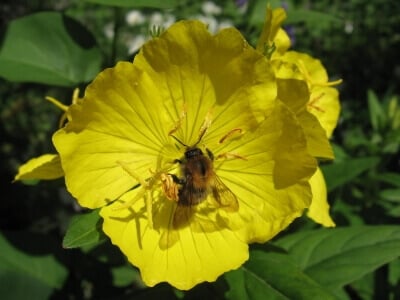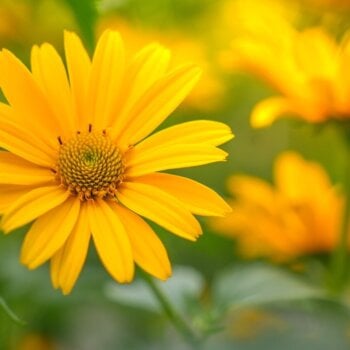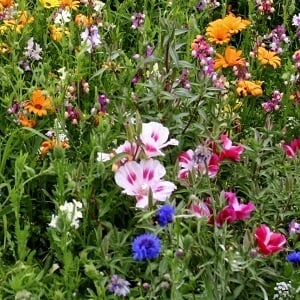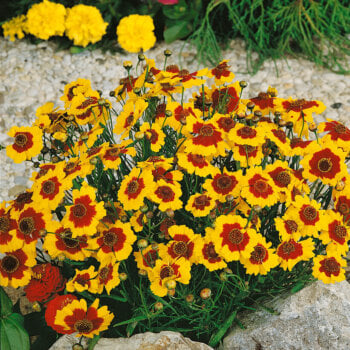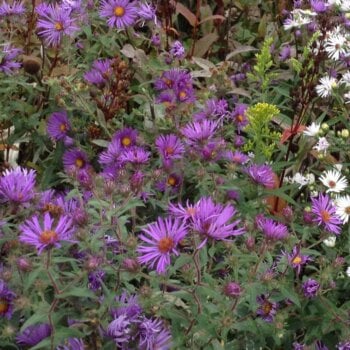Description
Cottage Country Native Wildflower Seed Mixture 6810. Open Pollinated. Combination of Annual and Perennial.
1 pkt sows approx. 3-5 m².
Our favourite ‘cottage country’ mix for those discerning gardeners who want the beauty of native wildflowers to envelop their property with little to no TLC required. This blend of hardy native perennial grasses and forbs is a great mix for week-end gardeners! When established, plant height ranges from 45-150 cm (18-60″). Please keep in mind that native seed mixes can take from 3 to 4 seasons to become fully established. However when all is said and done, it is well worth the wait! Contains: 10% Black Eyed Susan (Rudbeckia hirta), 2% Butterfly Weed (Asclepias tuberosa), 1% Flat Topped Aster (Aster umbellatus), 5% Foxglove Beardtongue (Penstemon digitalis), 30% Fowl Bluegrass (Poa palustris), 25% Indiangrass (Sorghastrum nutans), 25% Little Bluestem (Schizachyrum scoparium), 1% New England Aster (Aster novae-angliae), 1% Wild Bergamot (Monarda fistulosa). For larger areas, sow at 125 g/90 m² or 9.5 kg/ha
How to Grow
Native seed mixes do best when planted in the fall, typically between Oct. 15th and Nov. 15th. A late fall sowing allows the seed to be stratified naturally over the winter and early spring. An early spring sowing in April can work but due to the possibility of unseasonable weather preventing decent seed stratification, there is a greater chance that seed will remain dormant and not germinate until the spring of the following year.
Site Preparation. While there is little you can do to deal with the seeds of undesirable plants that are already in the soil, to help minimize unwanted competition in the seeding area, remove existing weeds by hand or apply an organic non-selective herbicide. Once all unwanted vegetation has been taken care of, loosen soil to 2.5 cm (1″) depth with a stiff rake, cultivator or hoe. Prairie flowers and grasses germinate and establish themselves much better when the seed is planted into a bed of loose, well drained soil rather than dense, compacted topsoil. Broadcast the seed evenly and let Mother Nature do the rest. Smaller seed can be mixed with dry sand to improve distribution when sowing. Rain, snow and frost-heaving of the soil will work the seed down into the soil bed. If you do choose to do a spring planting, it is imperative to make sure the seed comes into good contact and with the soil. Irrigate as needed during the first growing season. Be prepared to cut the site at a height of 20 cm (8″) twice during the first growing season and possibly once more early in the second season to help keep aggressive weeds in check while the native plants work through their establishment period. Hand removal of pockets of aggressive weeds may be required during the establishment period. Keep in mind that establishing a native planting from seed typically takes three to four years.
OSC recommends sowing a nurse crop at the same time as the native seed blend. The purpose of a quick germinating nurse crop is to help prevent soil/wind erosion and seed movement, reduce weed competition and provide shelter for the target seed blend during the early establishment period. The nurse crop will die out over the winter after its job is done. For ease of application the nurse crop can be mixed with the native seed blend and applied at the same time. OSC recommends using annual rye or oats at a rate of 22-25 kg/ha. Note that winter will completely kill annual rye plants and some seed and completely kill both oat plants and seed.
You can view our entire Ontario Native Seeds selection here.

